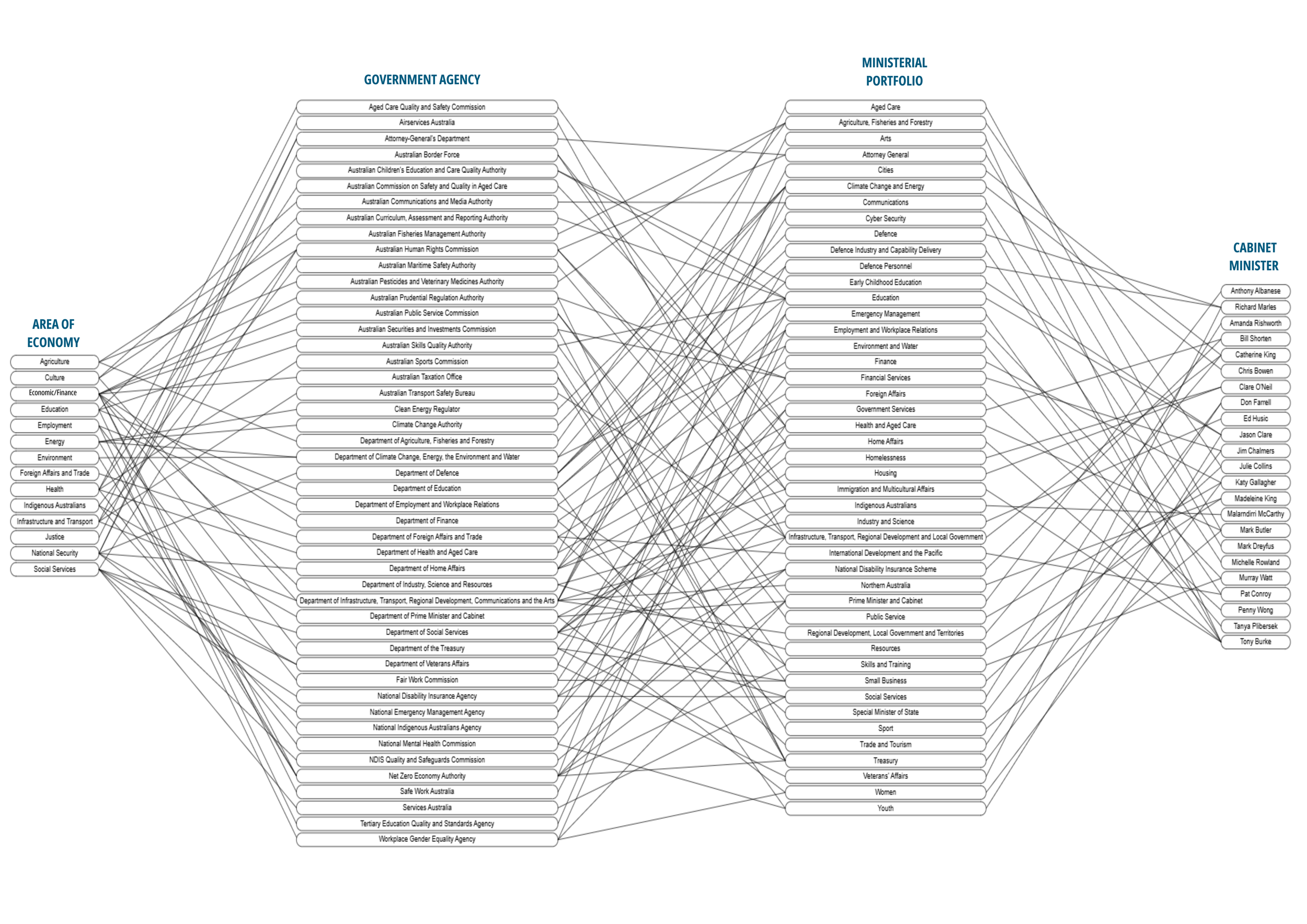More Efficient Government
By David Hughes
First published in the MRC’s Watercooler newsletter. Sign up to our mailing list to receive Watercooler directly in your inbox.
Malmsbury Primary School in regional Victoria was home to one of the more interesting election commitments in 2022. A few days out from the last federal election, the local federal MP proudly announced on social media that: “Labor will provide $20,000 to Malmsbury Primary School to build a Frog Bog.”
Around that time, students at the school were performing well below the national average on tests for writing, spelling and numeracy. Arresting this decline required more than a small pond in the school grounds.
With no solution in sight for declining student outcomes it's far easier to demonstrate commitment to a local school by handing over a small cheque to fund something in the playground that can be easily photographed.
Our three tiers of government in Australia create the perfect platform for misdirected spending and the waste of taxpayer money.
In Australia, states are responsible for the delivery of school education. But there’s nothing to stop federal or local governments funding school facilities in an ad hoc manner. The same goes for state hospitals, where we see ad hoc announcements for new facilities such as hospital car parks. While many of these are noble and valuable projects, we see three tiers of government involved in funding services and blurring the lines on who is actually responsible. In practice, this lets state governments off the hook for reducing waste and efficiently spending taxpayer money.
Government waste is a hot topic in the US with the appointment of Elon Musk to head a new Department of Government Efficiency. He has most recently set his sights on the agency tasked with delivering US foreign aid and already discovered:
$25,000 to fund an opera in Colombia to increase 'transgender representation' in the arts.
$500,000 to expand atheism in Nepal.
$32,000 for a Peruvian trans comic book.
$2.5 million to promote electric vehicles in Vietnam (where funding has delivered just one battery station).
Our team at the Menzies Research Centre has spent the last month looking at wasteful spending here in Australia with a paper soon to be released. We are currently reviewing 77,305 grants totalling $57.36 billion since Labor came to office. Here are a few examples of what we have found to date:
$439,293 to the University of Melbourne for a project ‘which aims to use Opera as a lens to examine gender inequality in freelance work contexts ... to generate new knowledge about the factors that support career advancement for conductors’.
Despite prisons being a state responsibility, the federal government is spending $987,423 for research into ‘care for trans and gender diverse people in prison … aimed at bringing more incarcerated trans people into integrated, culturally responsive care, thereby improving their health, wellbeing, and physical safety.’
Energy Minister Chris Bowen also gave the Australian Council of Trade Unions $15,950 to send two union officials to the UN climate conference in Azerbaijan.
$3,505,020 of taxpayer funds are going to the Australian Sex Workers union.
$1,000,000 for research on “Decolonising lactation care”.
And, as many of you may know, $9,071,700 to fund activists at the Environmental Defenders Office.
These examples only scratch the surface. The problem of government waste, inefficiency and red tape cuts much deeper. To demonstrate this, the MRC has developed a chart showing the relationships between key sectors of the economy, the agencies and departments that regulate them, and the Cabinet Ministers responsible. The idea for this chart is simple in practice; the output is anything but simple.
Chart: The complex web of Government agencies and portfolios*
NB: Click on the image to view a larger version of the chart
The chart shows an unwieldy and complex series of overlapping responsibilities and relationships that the average business or citizen cannot easily understand or navigate — and this is without including a multitude of other smaller agencies, non-Cabinet Ministers or state and local governments. Our counterparts, The NZ Institute went through this similar process in the lead up to their last national election and we are able to take some of their work as inspiration.
With all parts of this complex web constantly dreaming up new regulations or ways to spend money, it’s no wonder that red tape and waste continues to grow. Faced with such an impenetrable web, few businesses have the time or sophistication to successfully argue for removal of unnecessary red tape, let alone prevent new red tape from being dreamt up. A lack of accountability for public spending means no Minister or public official feels responsible for stopping waste.
Our upcoming work will put forward ideas to restore accountability to Government as the steward of taxpayer funds, so that all Australians can benefit from a more efficient Government and a reduction in red tape and waste.


